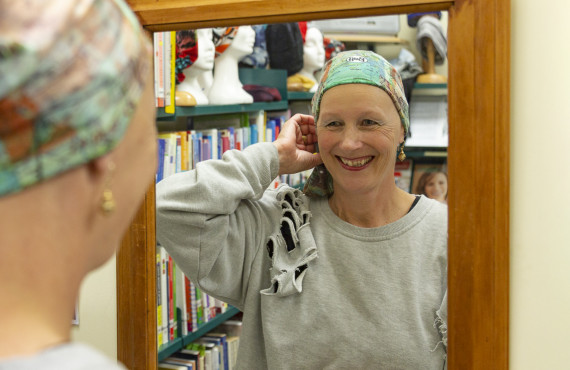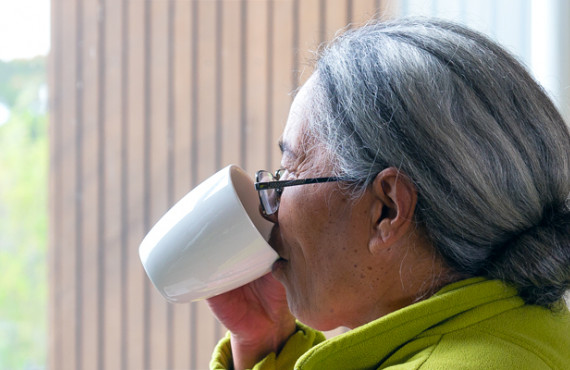The treatment offered will depend on the type and stage of uterus cancer, as well as your general health.
How is uterus cancer treated?
Treatment for uterus cancer may include:
- surgery
- hormone therapy
- chemotherapy
- radiation treatment
Some treatments for uterus cancer can make you unable to get pregnant (infertile).
Before any treatment begins, make sure that you have discussed and understood your treatment team's advice. You may ask for a second opinion if you want one.
From the time you are diagnosed with uterine cancer, you will be cared for by a team of health professionals. This team may include:
- gynaecologist: specialises in the female reproductive system
- gynaecological oncologist: specialises in cancers of the female reproductive system
- pathologist: analyses samples of body tissue or fluids to help with diagnosing and staging the cancer.
- medical oncologist: a doctor who specialises in cancer treatment using drugs (medications). They are responsible for prescribing any chemotherapy and other treatment options such as targeted therapies.
- radiation oncologist: a doctor specialising in cancer treatment who arranges, prescribes, plans and supervises any course of radiation treatment.
- radiologist: uses diagnostic imaging methods to see inside the body (for example, CT scans).
- cancer nurses and care coordinators: give nursing care and information to support you throughout your treatment.
- palliative care doctors and nurses: work closely with your family/whānau doctor (GP) and cancer doctors to provide supportive and palliative care so you can cope better with the effects of cancer at home and in hospital.
- physiotherapist: helps treat your body so you can cope with the physical effects caused by the cancer, surgery and treatment side effects.
- occupational therapist: helps you with everyday tasks like bathing, dressing and cooking.
- social worker: provides support and information about emotional and practical problems such as employment issues, money problems, home help and childcare.
- pharmacist: gives advice on medication.
- dietitian: gives advice on food and eating well.
- family/whānau doctor (GP): responsible for your general health and referral for specialist treatment.
Surgery for uterus cancer
The kind of surgery you have depends on the stage of uterus cancer.
Surgeries for uterus cancer include:
- total hysterectomy – removing the uterus
When you have a hysterectomy, you may also have a:
- bilateral salpingo-oophorectomy – removing the ovaries and fallopian tubes
- lymphadenectomy – removing lymph nodes near the cancer
If you have not been through menopause, removing your ovaries will cause menopause. This means your periods will stop, and you will be unable to get pregnant.
After the surgery, you will have discomfort or some pain. You will have pain medication given to you. It is best to let your treatment team know when you are starting to feel uncomfortable – don’t wait until the pain becomes severe.
Hormone treatment (endocrine therapy)
Hormone treatments use hormones to slow the growth of some cancer. It is usually given if the cancer has spread or has come back (recurred).
Uterus cancer tissue removed during your biopsy or surgery can be tested to see if it responds to hormones.
Progesterone is the main hormone treatment for uterine cancer. It helps shrink some cancers and control symptoms.
Radiation for uterus cancer
Radiation treatment uses x-ray beams to kill cancer cells. Treatment is carefully planned to do as little harm to normal cells.
Radiation treatment can be given from outside the body or inside the body (brachytherapy).
Chemotherapy for uterine cancer
Chemotherapy uses anti-cancer drugs to destroy the cancer cells while doing the least possible damage to normal cells.
Chemotherapy is used to treat uterine cancer when:
- the cancer has returned after surgery or radiation
- the cancer is not responding to hormone treatment
It is usually given as a drug that is injected into a vein (intravenously).
Side effects of uterine cancer
It may take some time to recover from uterine cancer treatment.
The side effects may include:
- tiredness
- premature menopause
- bladder problems
- bowel problems
- lymphoedema
Palliative care
Palliative care aims to improve your quality of life. It is not just about end of life care.
Palliative care will help:
- you to enjoy the best quality of life you can for as long as possible
- make sure that your physical, practical, emotional and spiritual needs are looked after as well as possible
- manage symptoms of your cancer
- manage side effects of treatment
- help you to feel in control of your situation
- make your time as positive as it can be for you and your family/whānau
Speak with your treatment team about palliative care options for you and your family/whānau.
Using complementary or traditional healing
Sometimes people with cancer might think about using complementary therapies or traditional healing.
Some alternative, complementary and traditional healing methods may react with the treatment you receive and cause harmful side-effects.
It is important to talk to your treatment team about any other therapies you’re using or thinking about because they may interfere with hospital treatment.
Life after cancer treatment
After you finish treatment for cancer, give yourself time to adjust to the physical and emotional changes. We are still here to support you after your treatment finishes.
You will need regular check-ups with your treatment team. These may include some blood tests or physical examinations. Speak with your treatment team about the plan for you.

How to manage the symptoms of cancer and the side effects of treatment.

We are here to help and support you and your whānau through cancer diagnosis, treatment and recovery…

Everyone copes in their own way when they hear they have cancer.

Cancer can impact not only your health but your lifestyle and relationships.
We know that going through cancer is tough and can raise many questions. You are not alone.
We have health professionals to answer your questions and provide the support you need.
Get in touch
